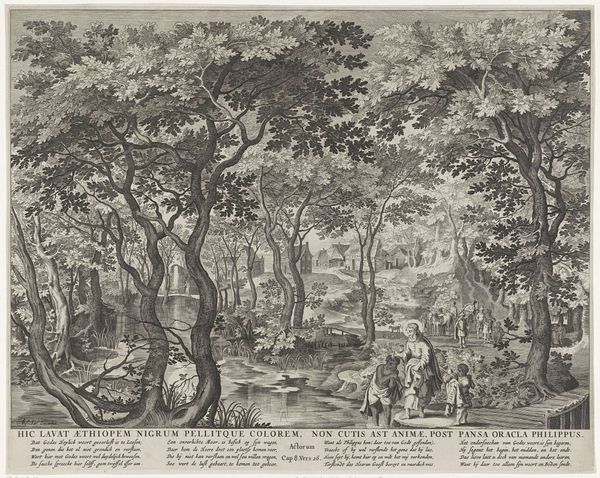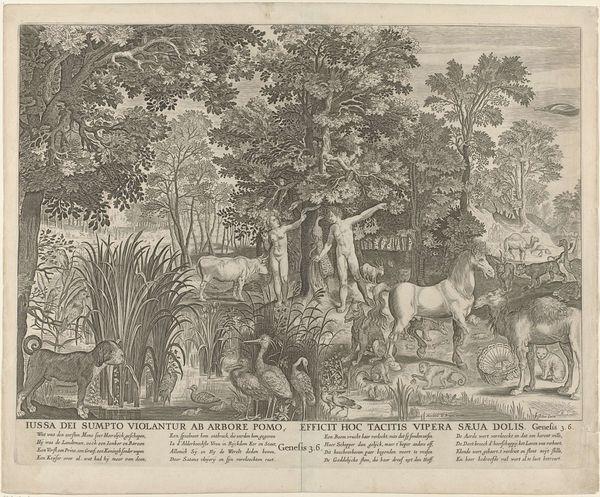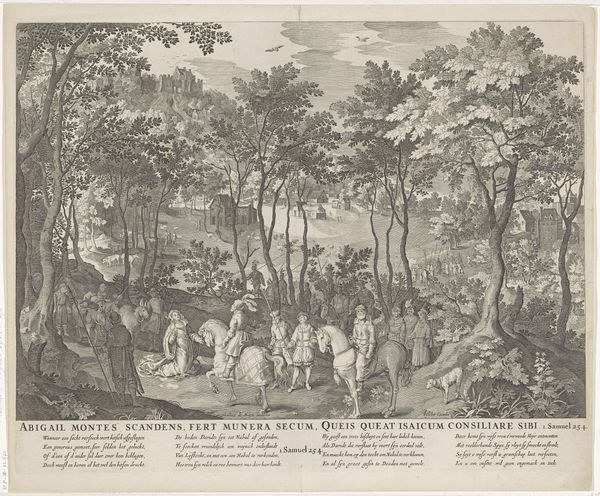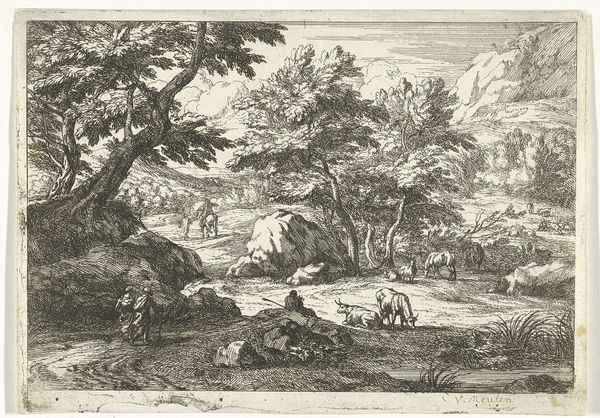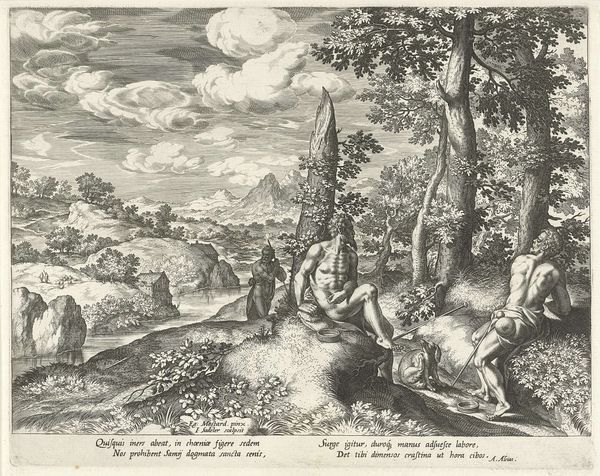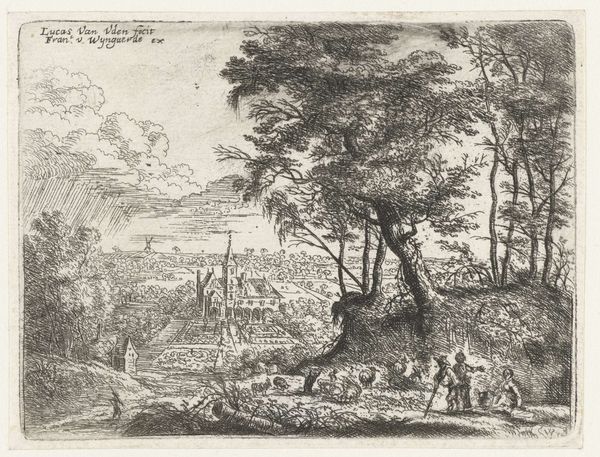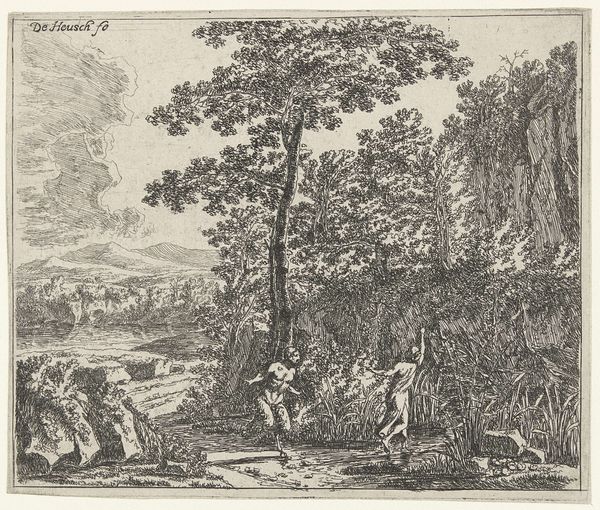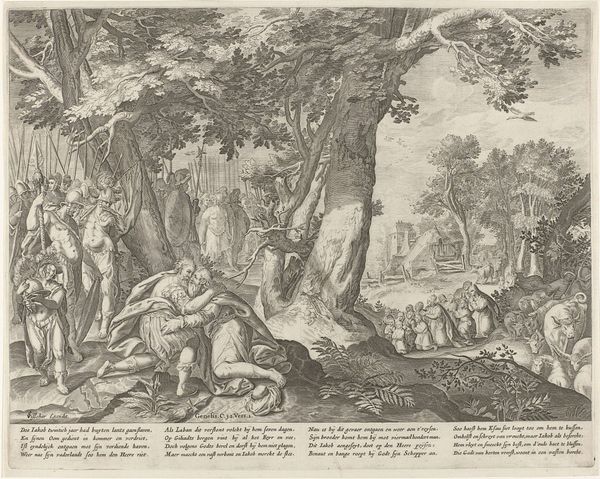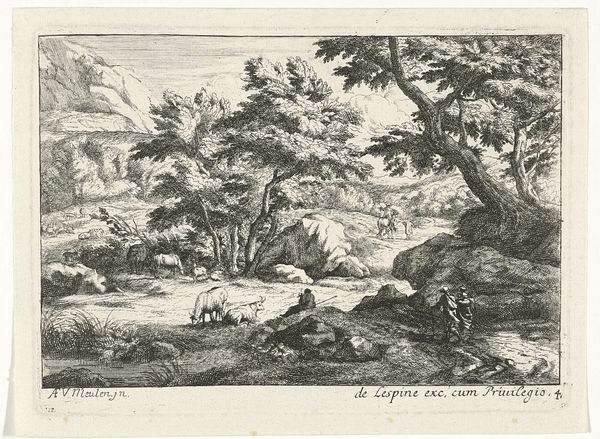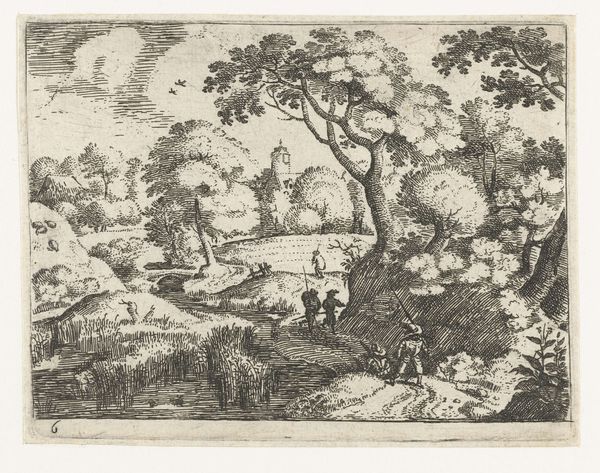
print, engraving
#
dutch-golden-age
# print
#
landscape
#
figuration
#
history-painting
#
engraving
Dimensions: height 414 mm, width 519 mm
Copyright: Rijks Museum: Open Domain
Jan van Londerseel created this etching, *Landschap met Christus die een blinde geneest*, around the turn of the 17th century. As an etching, the image is defined by the matrix of the metal plate from which it was printed, and the marks left behind through the manipulation of acid. The artist would have covered a metal plate with a waxy, acid-resistant ground, before drawing through it with a needle to expose the metal underneath. The plate was then immersed in acid, which bit into the exposed lines, creating grooves that would hold ink for printing. The appeal of etching, and other forms of printmaking, was that it allowed for the relatively easy reproduction of images. The image could be disseminated widely and reach a much broader audience than a unique painting. This had a levelling effect on the art world, and certainly changed the traditional definition of art as being unique. In this way, etchings and other prints can be understood in relation to wider social issues of labor, politics, and consumption.
Comments
No comments
Be the first to comment and join the conversation on the ultimate creative platform.
